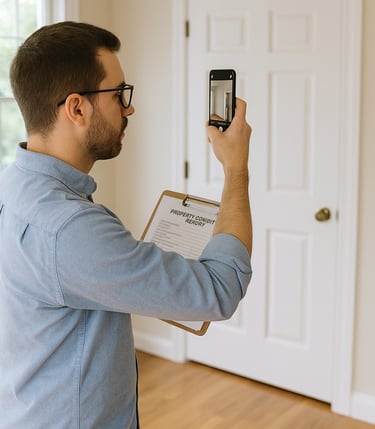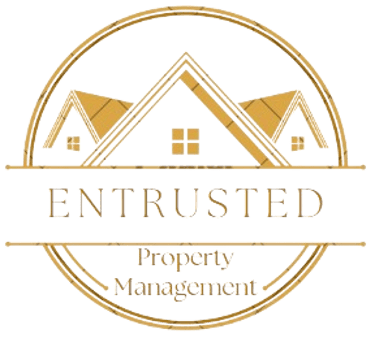How to Document Property Condition Properly: A Landlord’s Best Defense


Image: ChatGPT.com
As any seasoned landlord or property manager knows, clear, consistent documentation is your best protection when it comes to disputes, repairs, or security deposit claims. Whether you manage a single home or a large portfolio, properly documenting your property’s condition can save you time, money, and stress.
1. Start with a Detailed Move-In Inspection
Before a tenant takes possession, perform a thorough walkthrough of the property. Note every detail — from scuffed baseboards to hairline cracks in the walls. Use a standardized Move-In/Move-Out Checklist so nothing is overlooked.
Pro Tip:
Take high-resolution photos or videos of every room, appliance, and exterior feature. Date-stamp each file or use a property management app that automatically logs inspection dates.
2. Capture Key Areas
Focus your documentation on areas that are most likely to cause disputes later:
Floors & Carpets: Note stains, scratches, or discoloration.
Walls & Ceilings: Look for dents, nail holes, and water stains.
Appliances: Record make, model, and condition.
Bathrooms: Check for leaks, grout condition, and mold.
Exterior: Document landscaping, siding, driveways, and roofing.
Visual proof is invaluable. If you’re managing multiple properties, store files in labeled folders by property and inspection date for easy retrieval.
3. Repeat the Process at Move-Out
At move-out, perform the same inspection side-by-side with your original report. Use “before and after” photos for comparison. This eliminates guesswork and provides clear evidence if deductions from the security deposit are necessary.
Include Tenants in the Process:
Invite the tenant to be present during the final walkthrough. Transparency helps prevent future disputes and fosters professionalism.
4. Keep a Digital Paper Trail
Modern property managers use digital systems for recordkeeping. Cloud storage platforms, property management software, or even Google Drive folders can safely store your documentation.
Keep:
Inspection Reports
Photos & Videos
Maintenance Logs
Tenant Communication Records
Having organized digital records not only simplifies management but also strengthens your case in the event of legal action.
5. Maintain Ongoing Records
Property condition documentation isn’t just for move-in and move-out. Record maintenance visits, vendor repairs, and upgrades throughout a tenant’s stay. This continuity helps demonstrate that the property was well maintained and repairs were addressed promptly.
Final Thoughts
Proper documentation is more than just good practice — it’s a legal safeguard. By keeping detailed, date-stamped, and well-organized records, landlords can prevent misunderstandings, resolve disputes efficiently, and maintain strong professional credibility.
If you prefer to have this process handled by professionals, consider working with a trusted local team like Entrusted Property Management — serving Harford and Baltimore Counties.
For more information on properties located in Harford & Baltimore County, MD, click here.


